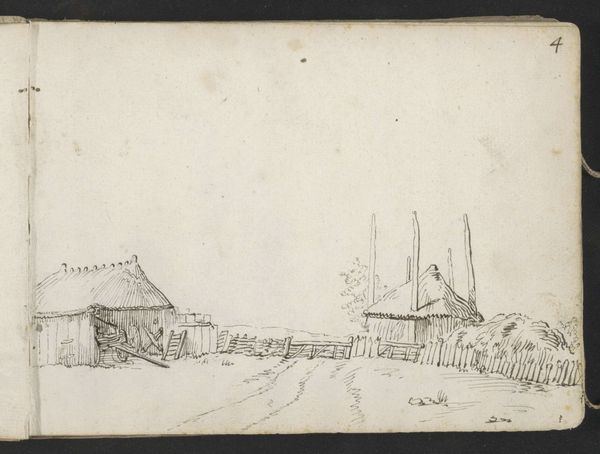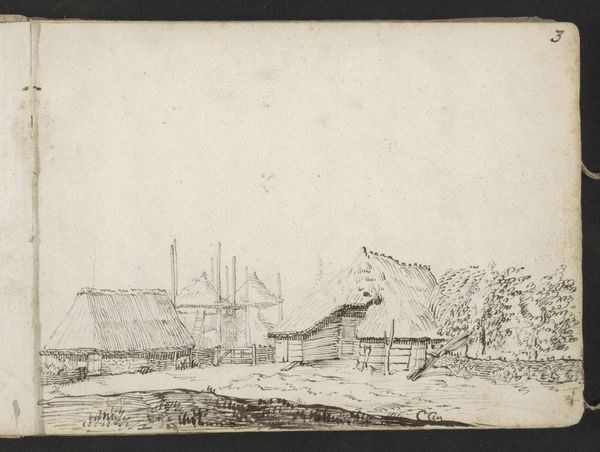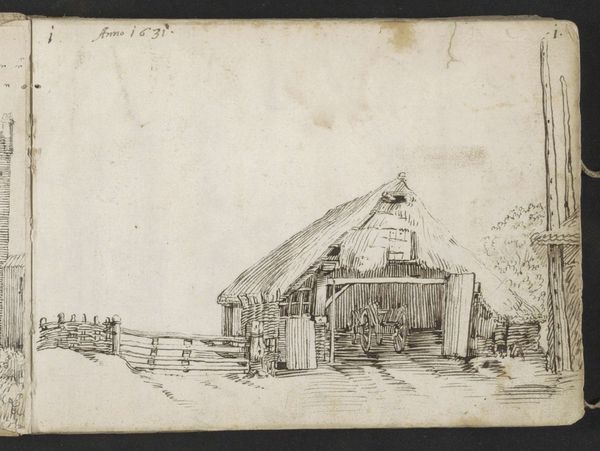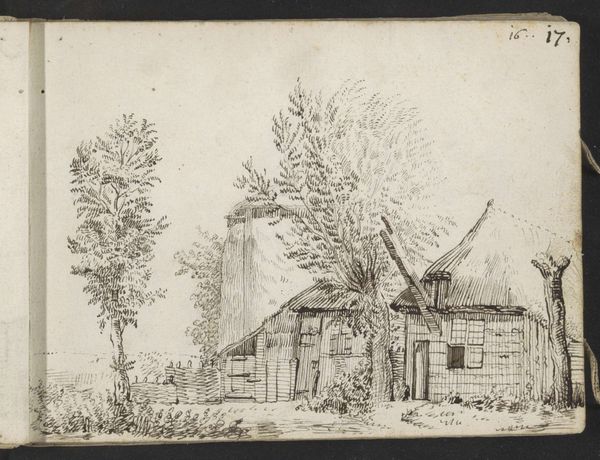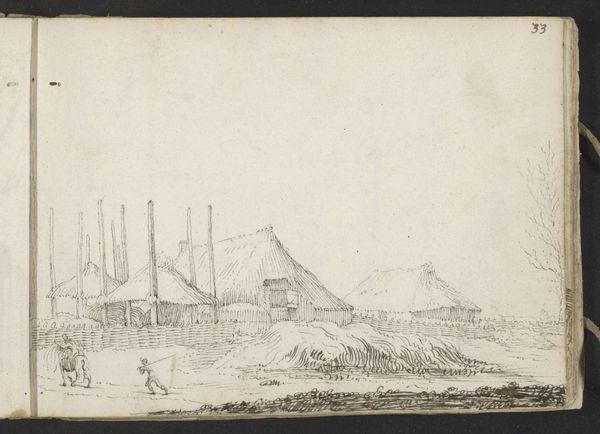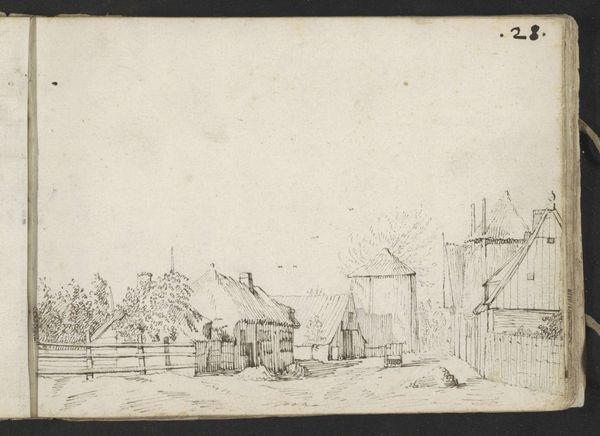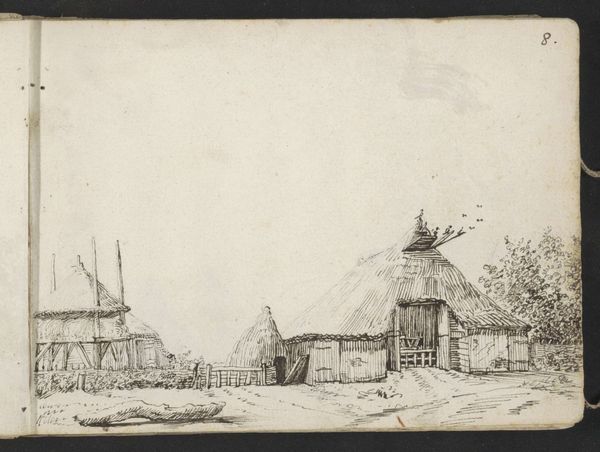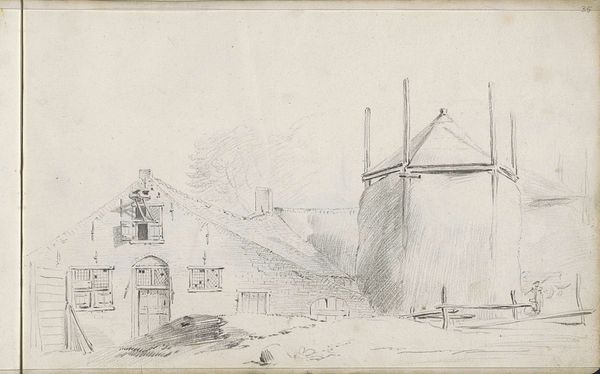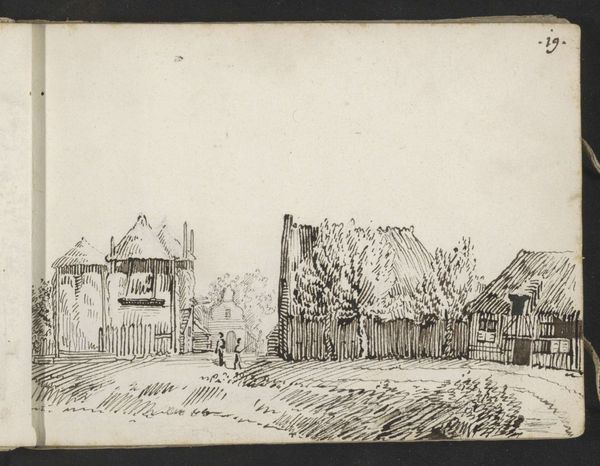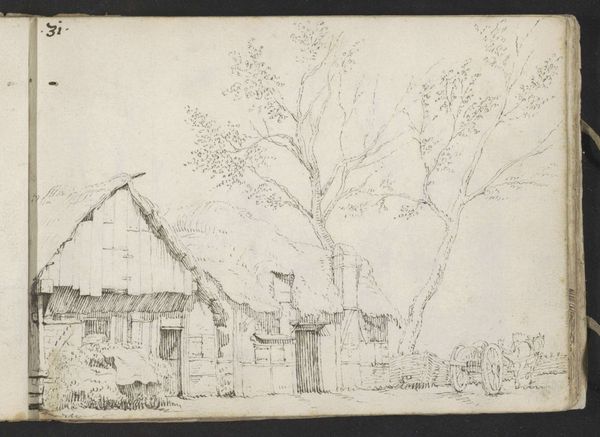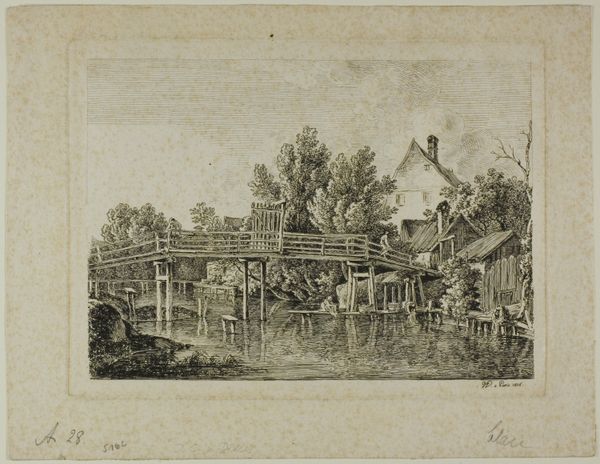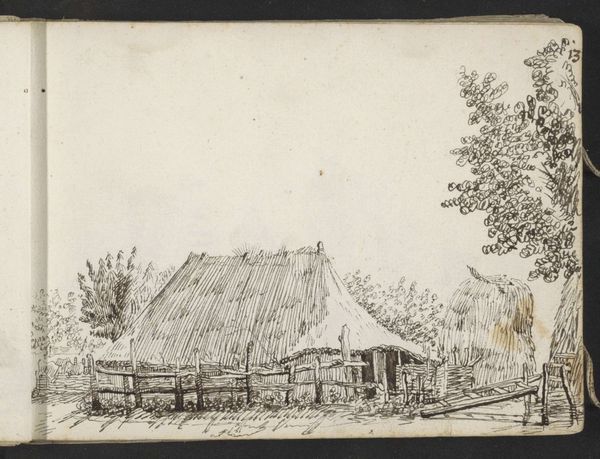
Boerenerf met een waterput, hooischuur en scharrelende dieren c. 1631 - 1633
0:00
0:00
drawing, paper, ink, pen
#
drawing
#
baroque
#
dutch-golden-age
#
landscape
#
paper
#
ink
#
pen-ink sketch
#
pen
#
genre-painting
Copyright: Rijks Museum: Open Domain
Curator: Here we have "Boerenerf met een waterput, hooischuur en scharrelende dieren" a pen and ink drawing by Gerard ter Borch the Younger, dating from around 1631-1633. It depicts a farmyard scene. Editor: My first thought is the drawing feels deceptively simple, like a quickly jotted note capturing a specific kind of rural peace, perhaps one slipping away even then. Curator: Indeed, and in considering the context of the Dutch Golden Age, these idyllic farmscapes are frequently loaded with ideological weight. There is the myth-making about rural virtue that masks social stratification and gendered division of labor within these communities. Ter Borch, son of a tax collector, occupied a privileged social position from which to depict a subject’s material conditions. Editor: Absolutely. The hayrick in particular holds symbolic value. Throughout the Medieval and Early Modern eras, depictions of grain, harvests and hay became stand-ins for abundance, providence, even national identity. Is ter Borch tapping into this vein here? Curator: Most likely, while it's important to resist the impulse to flatten it as straightforward propaganda. The very medium - pen and ink on paper – indicates it's possibly a preliminary sketch. Editor: Yes, there’s a palpable immediacy in the scratchy lines suggesting fleeting moments. You can almost hear the sounds of the farm. And the animals aren’t just filler; their placement and scale hint at the intertwined lives of humans and livestock within that society. The water pump becomes crucial; where is the community source for water? Are women, specifically, excluded from such space? Curator: Precisely, we can see gender roles depicted as critical yet obscured within. Looking closer, one is struck by how even something seemingly straightforward, such as a barnyard scene can expose the power dynamics in 17th century rural life. The Dutch Golden Age rurality isn't only bucolic peace but rather layered complexities of life. Editor: The interplay between seemingly benign imagery and deeper societal structures continues to fascinate. It proves how important art is when understanding cultural nuances. Curator: It prompts reflection. Each symbol or depiction bears countless possible societal perspectives when looked at closely.
Comments
No comments
Be the first to comment and join the conversation on the ultimate creative platform.
